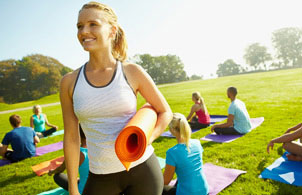
You can improve your fitness and nutrition knowledge to help take the next step on your career path or for better personal and family health. Here are a few qualities that effective fitness and nutrition practitioners have in common:
- Organized: Keep nutrition and exercise plans on schedule.
- Healthy: You are conscious of healthy eating and living habits for yourself and your loved ones.
- Detail oriented: It’s important to have a sharp eye and check things twice.
"I chose to further my education and accounting knowledge with ICS Canada while working as an accounting clerk, which allowed me to move up within the company at which I am currently working. Studying with ICS Canada was a great experience, and the instructors were very helpful when it came to resolving any issues I had while studying."
- Sean S., ICS Canada graduate
"I have taken three diploma courses with ICS Canada. It has been very rewarding and challenging. I love to increase my knowledge level and share experiences. ICS Canada is great. Enrol! The contact with them is always very pleasant. You feel like a part of the ICS team."
- Connie K., ICS Canada graduate
Your program includes:
- Customized payment plans with 0% interest
- Learning aids
- Study Planner App to keep track of your progress
- Instructional support from our experienced faculty
- Your personalized online student homepage and learning portal
- Exclusive access to ICS Canada’s Student and Alumni Facebook Group
- Additional resources such as our online library and career guidance from Career Cruising
Does the Fitness and Nutrition Certificate Program provide any industry certification upon completion?
There is no certification with the Fitness and Nutrition Certificate. ICS Canada’s certificate programs are generally geared toward people who already work in that field and do not always offer certification. If certification is offered with a program, it will be listed on the Program Overview page on our website. Certification is generally given out by the provincial/national governing body for a career field.
More FAQs >
